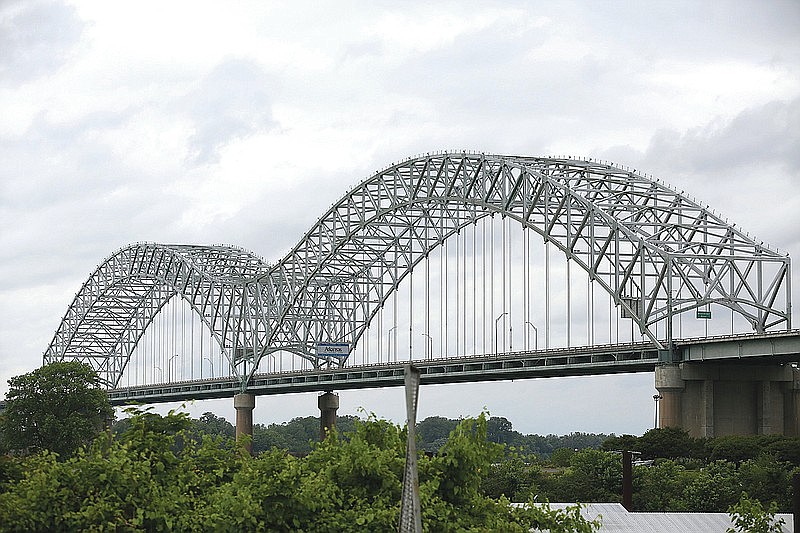MEMPHIS, Tenn. -- All 17 steel plates necessary to repair the Interstate 40 bridge over the Mississippi River are in place, according to the Tennessee Department of Transportation.
But drilling, bolting and torquing work is ongoing, according to Monday's update from Nichole Lawrence, a spokeswoman for the agency.
Thousands of bolts are being used to attach the steel plates to the bridge.
Complete installation of the plates is a process that also involves the removal of the lateral bracing, modification of the gusset connection plate and reinstallation of the lateral bracing, according to the update.
"Once the last bolt is torqued on the plate, these items can be completed," wrote Lawrence. "On Wednesday, we will be load testing the bridge to monitor the performance using the existing sensors on the bridge. The data will be used to monitor how the stresses are transferred throughout the bridge support system."
On May 11, a crack was discovered in a steel beam connecting cords to an arch. The Hernando de Soto Bridge is a tied-arch span. When the beam cracked, the load that was once carried by the beam shifted to other parts of the bridge.
The way the bridge is designed means the Arkansas Department of Transportation classifies it as "fracture critical," meaning parts of the bridge are "subject to tension whose failure would probably cause a portion of or the entire bridge to collapse." Fracture critical bridges require frequent inspections but aren't inherently unsafe.
The Tennessee Department of Transportation doesn't have an exact reopening date yet for the Hernando de Soto Bridge, according to Lawrence.
"A schedule will be shared as soon as it's available," she wrote.
Dave Parker, a spokesman for the Arkansas Department of Transportation, said Wednesday's load test could help determine when the bridge will reopen.
"Assuming that test doesn't show any problems or issues, I suspect there there will be a date assigned after that," he said.
On Friday, officials from the Tennessee Department of Transportation said the bridge work wouldn't be completed until "the first part of August."
Earlier estimates were a bit more optimistic. In June, transportation officials said the bridge repairs could take until the end of July or early August.
Built in 1973, the 3-mile-long Hernando de Soto Bridge between Memphis and West Memphis is part of a major freight corridor through the central United States. Since its closure, traffic has been routed to the 71-year-old Memphis and Arkansas Bridge, about 3 miles to the south on Interstate 55.
Work to repair the Interstate 40 bridge is currently in its third and final phase.
The third phase involves repairing weaknesses found after an in-depth inspection of the entire bridge involving about 500 weld connections. The inspection found no additional cracks.
All the steel plates for the repair were fabricated by W&W/AFCO Steel at its facilities in Little Rock and Van Buren. Plates delivered last week weighed up to 5,000 pounds each.
The Tennessee Transportation Department oversees repairs of the shared bridge, while the Arkansas department is responsible for bridge inspections. Kiewit Infrastructure Group was contracted for the repairs.
While the crack was discovered May 11, a photo from 2019, confirmed by transportation officials to be authentic, shows the crack has potentially been there for years. Another photo appears to show a crack as far back as 2016, but the authenticity of that image remains under investigation.
The discovery led the Arkansas Department of Transportation to fire the inspection team leader for missing the crack during at least two previous inspections, which are conducted annually.
